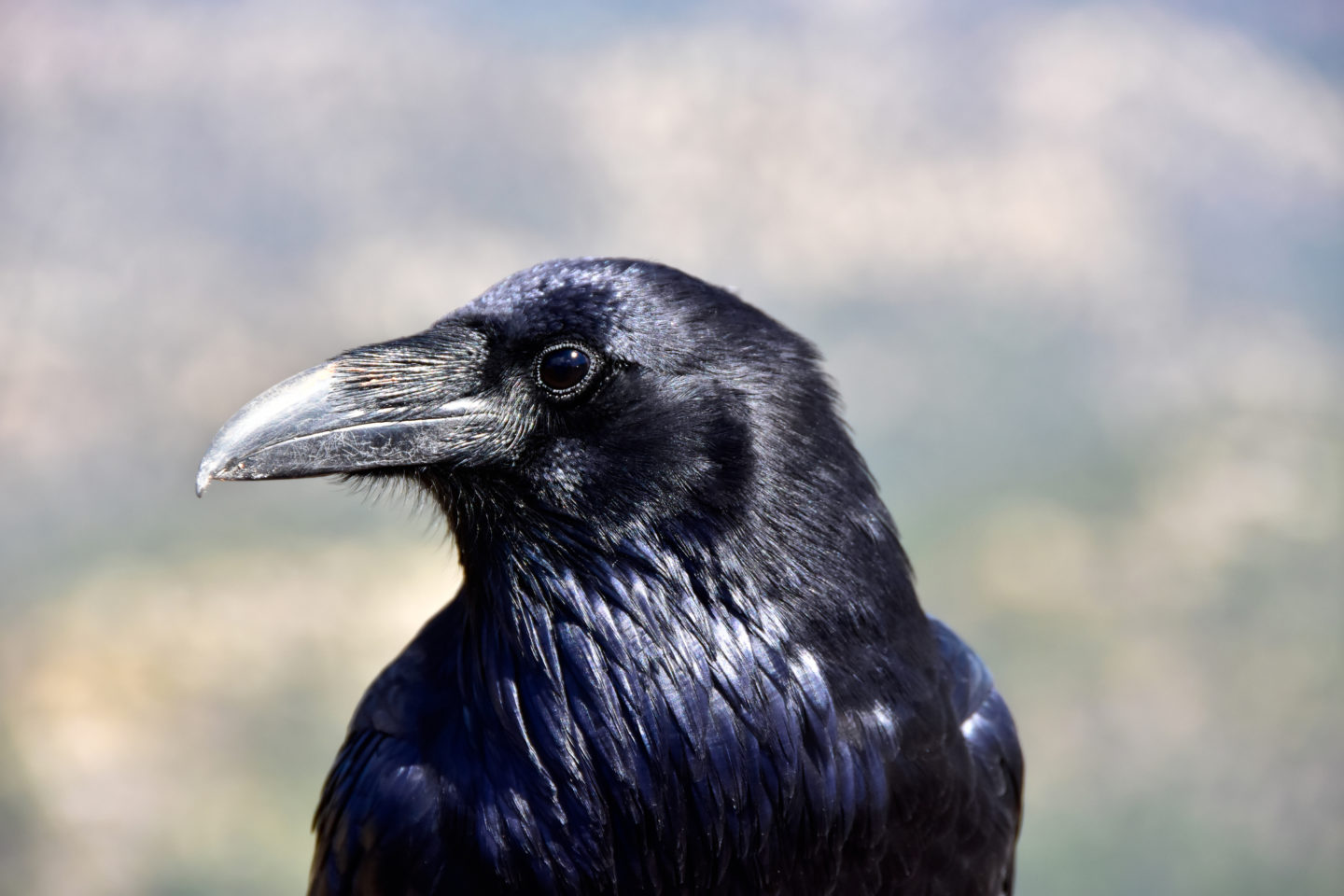Revelations that farmers and landowners in Scotland have been licensed to kill more than 4,000 ravens in the last four years have sparked a chorus of criticism from campaigners.
Information released under freedom of information law has disclosed that the government’s wildlife agency, Scottish Natural Heritage (SNH), issued 621 licences to cull 4,124 ravens between January 2015 and July 2018.
About three-quarters of those licensed to be killed actually end up being shot, suggesting that around 3,000 birds have died. Farmers say ravens attack and kill lambs – but animal groups are alarmed about the mass killing.
SNH ran into fierce controversy in 2018 over a licence to kill 69 ravens at Strathbraan in Perthshire, ostensibly to protect wading birds. But after a legal challenge from bird experts, land managers promised in August to suspend the cull, having shot 39 ravens.
Now information obtained from SNH by the conservation consultant, Dr Rob Sheldon, has exposed widespread raven killing. SNH issued 149 licences to kill 904 ravens in 2015, rising to 171 licences to kill 1,191 birds in 2018.
The number of ravens subsequently reported killed was 724 in 2015 and an estimated 869 in 2018. Sheldon described the figures as “staggering”, and pointed out that over the same period in England and Wales 13 raven cull licences had led to 107 ravens being killed.
He suggested that the total raven population in Scotland could consist of over 3,000 breeding pairs and perhaps another 6,500 to 13,000 individuals. He raised concerns about how the culling might impact the population, highlighting a 12 per cent drop between 2016 and 2017.
“I understand, and accept, that ravens can be a problem for livestock farmers in some instances, and there may be a need for a level of lethal control,” Sheldon told The Ferret.
“However, a number of individual licences issued are for up to 50 ravens to be killed and I can’t believe that that is a proportionate response. It also remains unclear how many of the licences are issued to sheep farmers to protect lambs and how many are issued for other livestock.”
He added: “Particularly worrying is the observed decline in ravens between 2016 and 2017, which might suggest that the killing is having a population affect – hopefully the population modelling that SNH have commissioned will shed some light on that.”
The Royal Society for the Protection of Birds in Scotland expressed concern about the number of ravens killed. “There are strict legal tests for the issuing licences for serious agricultural damage caused by ravens, and we will be checking as a matter of urgency with SNH that due process is being followed,” said the society’s head of species and land management, Duncan Orr Ewing.
“We take a little bit of comfort from the fact that, across Scotland as a whole, ravens are continuing to do well. But it would be disastrous if this recovery was reversed by a lack of proper licence regulation.”
The Scottish Raptor Study Group, which successfully challenged the proposed Strathbraan cull, said the number of ravens shot was a shock. “What oversight regime is in place to monitor the numbers killed against that permitted?” asked the group’s Logan Steele.
“How many licences were issued where the primary land use was for grouse shooting? Some grouse moors maintain sheep as ‘tick mops’ which could qualify them to apply for a licence to control ravens.”
The Scottish animal welfare charity, OneKind, was also shocked by the extent of the cull. “Recovering from historical persecution by gamekeepers and farmers, ravens are extremely intelligent sociable birds, steeped in mythology and legend,” said director, Bob Elliot.
“To see a raven whilst walking in Scotland’s countryside is a pleasure many nature enthusiasts enjoy. Questions need to be asked as to what non-lethal alternatives are being trialled to prevent conflicts, and what impact SNH licensed shooting is now having on raven populations.”
John Robins from Animal Concern Advice Line argued that there was no good reason to kill ravens. “It is a myth that ravens take healthy lambs – they scavenge afterbirth and dead lambs,” he claimed.
“Far more sheep and lambs are lost to the weather than are killed by any predators. The real reason ravens are killed is to artificially increase the number of non-native pheasants and other birds people shoot for fun.”
Robins accused SNH of “kowtowing to wealthy landowners and sports shooters who think they can do what they hell they like to turn our natural environment into their private playground.”
National Farmers Union Scotland pointed out that the licensing system was a way of enabling farmers to prevent legally protected wildlife from causing serious damage.
“This framework is really important to farmers because unfortunately in recent times there have been some graphic demonstrations of the dreadful impact that ravens can have especially on young lambs,” said the union’s environment manager, Andrew Midgley.
“Raven predation has serious animal welfare implications and causes huge emotional distress to the livestock keepers as well as a financial impact on the business. Farmers apply to SNH for the licence to deal with a problem and it is for SNH to makes decisions on the basis of its knowledge of the population and species ecology.”
According to SNH, there has been an increase in the Scottish raven population of over 50 per cent in the last 20 years and the majority of the UK breeding population is in Scotland. “We understand the concerns about granting these licences,” said the agency’s licensing manager, Ben Ross.
“But we are confident that these licences won’t jeopardise the Scottish raven population. Ravens can cause serious damage to livestock – particularly lambs – and we have to recognise the impact this has on farmers.”
He added: “We issue licences where there is no other satisfactory solution. These licences permit shooting of birds that are causing the damage, with the aim of removing problem birds and deterring other ravens.”
Research about to be published by SNH will show that the number of birds licensed to be killed is unlikely to impact on the health of the Scottish raven population, Ross disclosed.
“However, the modelling predicts that there could be some localised declines but these predictions are not being witnessed on the ground. We therefore need to continue monitoring to ensure that this is the case and that our approach remains appropriate.”
The Scottish Gamekeepers Association declined to comment.
This story was updated at 10pm on 12 December 2018 to include comments from the Scottish Raptor Study Group, and to change a photo. Photo thanks to Scottish Raptor Study Group.














